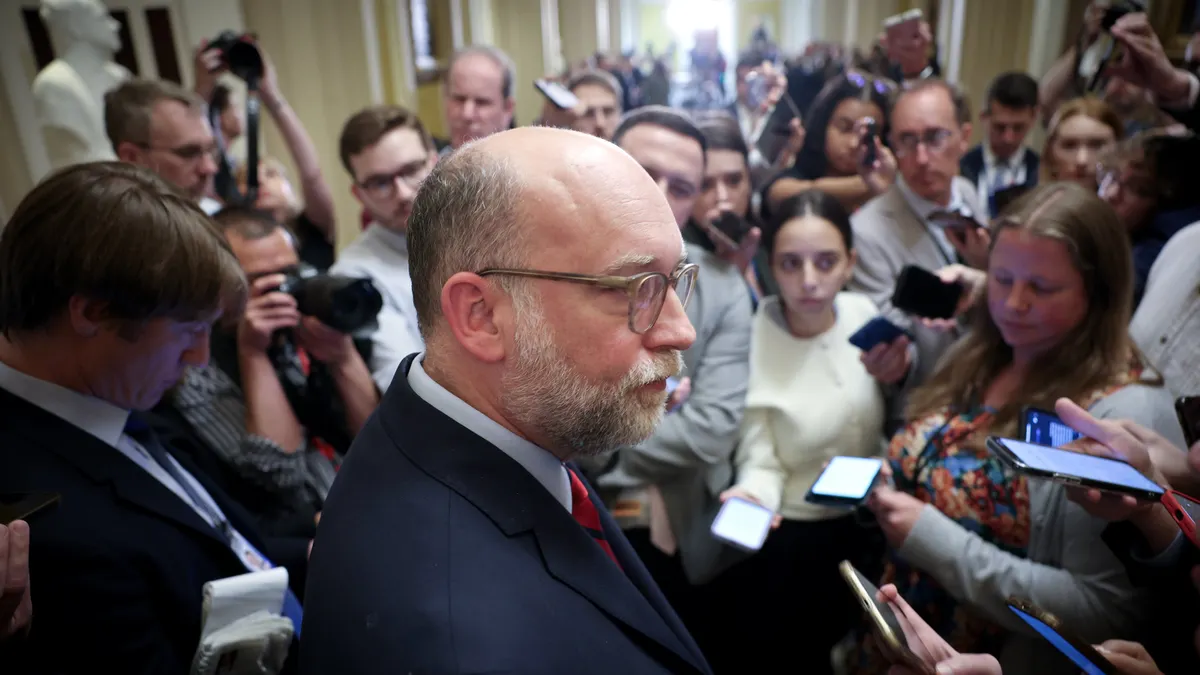Editor's Note: This story is part of a series on the multigenerational workforce. The full package is available here.
For the first time in history, the workplace has four to five generations working together:
- Traditionalists (born before 1946)
- Baby Boomers (born between 1946 and 1964)
- Generation X (born between 1965 and around 1980)
- Millennials (born between 1980 and 1998)
- Generation Z (born after 1999).
The generations share workspace, exchange information, sit on the same teams and get involved in the same work-sponsored activities, but not without differences in the way they perceive and communicate with each other.
Sara P. Weiner, PhD., principal consultant of organizational development science at Glint, an organizational development platform, says that generations are tied to historical, political, economic and cultural events.
"The trouble with defining generations by aligning them with events is that people of all ages experience these events within the same timeframe," says Weiner. "As a result, it’s impossible to pinpoint definitive generational lines that would [surpass] all of the other qualities that make people, people." Anyone who was between the ages of eight and 80 in 1963 can probably recall President John F. Kennedy’s assassination that year and how it affected their lives, for example.
The power of stereotypes — and why they must be avoided
Drawing hard lines between the generations doesn't take into account such things as personality differences and other distinctions within each group. Ian Johnson, director of talent management at Virginia Mason Medical Center in Seattle, told HR Dive that the broad labels given generations obviously don’t apply to everyone in any age group. All generations have personal and professional goals, just as some millennials are introverts and others are extroverts. People in the workplace must get past thinking in terms of “us” versus “them,” he adds, and think in terms of “us.”
Stereotypes about generations are often the source of communication problems between the groups. More assumptions may be made about millennials, who account for 40% of all workers, than any other generation. But Weiner says the research doesn't support the assumption that generations have unique characteristics.
She cites as an example a U.S. Department of Labor study, which disproves the myth that millennials are job-hoppers. The results show that millennials are just as likely to stay with their current employer as the other generations.
Another misperception about millennials is that they're a cynical generation that’s critical of their employers. But a 2016 report from Aon Hewitt, Managing Millennials: Changing Perspectives for a Changing Workforce, shows that they’re more likely to use words like honest, loyal, adaptable, recognition-oriented, efficient, engagement-focused and respectful than the other generations to describe their work experience.
Neil Shastri, Aon’s leader of global insights and innovation, cautions against painting millennials “with a broad brush.” He told HR Dive that even millennials have diverse orientations that defy assumptions. Established millennials, who rose up the ranks of management, work from home and live in the suburbs. Others are emerging millennials, who are staff employees, prefer working in the office and like living in cities.
Heather Myers, chief psychology officer at Traitify, a company that develops workplace personality assessments, says personality differences driven by life changes can influence intergenerational communication. According to a survey by Robert Half and the nonprofit organization Enactus, finance leaders observed the most generational differences in: 1) communication style, 2) change management and 3) technical skills.
Myers says Traitify’s recent research on personality dimensions found older people are sometimes less open to new ideas and experiences than younger people, but they're also found to be more easygoing and calm in the face of emotional challenges and more focused on the needs of others than younger people. Personality differences might exacerbate communication problems between the generations, says Myers.
"Imagine millennials being high on openness, but low on agreeableness, and boomers being low on openness and high on agreeableness, with both groups talking past each other and having challenges collaborating," she added.
Although older workers don’t have a lock on being closed to new ideas or calm in the face of challenges, differences in workers’ viewpoints and how they handle things can create discord in the workplace.
Uncovering generational misperceptions
Stereotypes about generations might not hold up, but what about how generations see and interact with each other? That’s where communication can break down, says Shastri. Communication problems between boomers and Gen X or millennials and Gen Z often begin with stereotypes about each other that aren't always expressed with words.
The younger boss/older worker relationship typifies how the generations sometimes see each other. Shastri says a millennial boss might appear to older subordinates as a know-it-all, with a commanding “I can handle this” attitude. But millennial bosses sometimes forget how much knowledge older employees have gained through years of experience, and they shouldn't assume that older workers didn't rise to the management level despite their incompetence. Boomers, says Shastri, can attribute young managers’ attitudes to “new-boss” syndrome.
A millennial himself, Shastri also found that boomers sometimes view younger workers as they do their own children or grandchildren, instead of as coworkers. As technology came to define the way people communicate, boomers were caught in the transition of language changing from words to emoticons, Shastri notes.
In fact, Myers says many of the communication problems between generations revolves around technology and the preferred methods of giving and receiving information.
"Millennials are used to communicating through programs like Snapchat, Twitter, Instagram, Slack and Google Hangouts. Even email seems old school," says Myers. "For older generations who grew up with letters, phone conversations and eventually email, rapidly changing technology can be more difficult to keep up with."
Avoiding the consequences
Technology allows employers multiple ways of communicating with employees, often based on generational preferences. Tech-savvy millennials might favor messaging, and boomers might be more comfortable with email. But Belnavis says managers — regardless of their generation and personal communication preferences — should use what he calls a hybrid approach to communicating with employees about performance or discipline, areas that could have legal consequences.
The “hybrid” approach requires documenting performance or disciplinary actions on paper, holding face-to-face meetings, even electronically, if necessary. Belnavis says email messages can be misinterpreted or misconstrued, possibly exposing employers to more risk.
Breaking generational barriers
Generations can be instructed to communicate with each other as peers. The Virginia Mason Medical Center Production System is a management model founded on respect. Workers should think about what they were like at age 25 and avoid statements that start out with, “In my day…..” or “We used to…,” says Johnson. And young workers must avoid calling older workers “grandma” or “old man.”
Some organizations with a large staff of millennials hold training sessions with older managers on what not to say in the workplace, says Shastri. He quoted a marketing executive as saying, "What’s wrong with this generation?" after a young worker showed up at the executive's office unannounced, tieless and expecting to meet with him. Training can help both the executive and younger worker interact more appropriately.
Myers recommends that employers:
- Create intergenerational teams. This encourages communication between generations and leads to better understanding.
- Create teams with different personalities. For example, you want conscientiousness people who will get the job done, people high in openness to generate ideas and people high in agreeableness to help keep the group positive.
- Create respectful environments in which all team members are encouraged to contribute in their own ways without fear of being belittled or rejected.
- Provide company-wide communication platforms for training all employees. Whether you chose Slack, Google Hangouts, Gmail, Dropbox or myriad other communication platforms, make sure every employee is trained in their use and comfortable doing so.



















